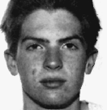Philip Gale
|
Philip Gale | |
| Date | March 13, 1998 |
|---|---|
| Location | Cambridge, Massachusetts, U.S. |
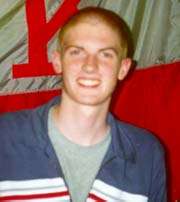
Philip Gale (November 15, 1978 – March 13, 1998) was an American pioneering Internet software developer, computer prodigy, and sophomore student at the Massachusetts Institute of Technology (MIT). He was notable for having written Total Access while at MIT, and was hired by EarthLink at the age of 16 to work on its development. Today the company has more than one million users. By the age of 17, Gale had earned roughly a million dollars' worth of stock options at Earthlink for his innovative ISP programs.[1]
In 1995, Gale's father died from a heart attack, and friends said Gale struggled to come to terms with the loss. He returned to MIT in 1996 and became a music major. After complaints of being bored and depressed, on March 13, 1998, about 7:30 p.m., Gale broke a window and jumped to his death from a classroom on the fifteenth floor of a building on the MIT campus. He was nineteen.
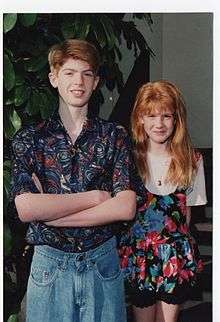
Early life and education
Philip Chandler Gale (born 1978, Los Angeles, California) and his younger sister Elizabeth were the children of Marie and David Gale. His parents, and much of his immediate family, were deeply committed to the Church of Scientology, in which his mother Marie had been raised herself. His father, a software engineer, founded RealWorld in 1981.[2] His parents met through the church in Los Angeles, where Marie was on staff and David was a parishioner. They were married the year Phil was born, and remained married for 18 years, until David's sudden death in 1995.
The family moved from LA to New Hampshire when Philip was young, and he showed "an early aptitude for numbers and machines."[3] Seeing his abilities, Marie taught him at home with another mother, and said that before the age of five, he was reading and doing math at the second and third-grade level.[3] Later they lived in Clearwater, Florida, Charlotte, North Carolina;[1] Utah and Oregon. Gale attended boarding school in the northwest from the age of eight.
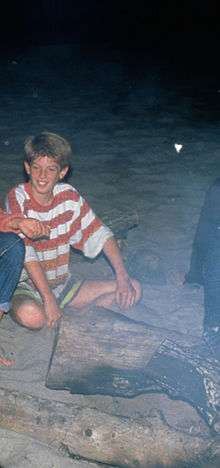
He lived and studied at The Delphian School in Sheridan, Oregon, a private boarding school based L. Ron Hubbard's study technology.[4] Philip's parents personally knew the founder/s of the school. He graduated from there at age 14.[5] At that time, his family had moved to Utah. Gale got a job in programming at the marketing firm where his father worked, but he had contentious relations with fellow workers, as he could outperform many older programmers and had a tendency to treat people who were not as intelligent as he was with contempt.[3]

Massachusetts Institute of Technology
Gale was admitted to MIT at the age of fifteen in 1993. He initially pursued studies in physics and engineering. In addition to his ability in programming, he was an accomplished drummer.[6]
At MIT, he joined the Phi Sigma Kappa fraternity as a freshman in the fall of 1994.[6]
At sixteen, Gale wrote an important software program called Total Access, to increase usage of Internet service providers (ISP).[3][7] He was hired by EarthLink over Christmas break his first year as a student, and took a three-semester sabbatical from MIT to work at EarthLink Network Inc. As director of research and development, he developed the program to increase the ability of the company's internet servers to connect customers to the Internet, giving the firm a competitive advantage that helped it ascend to the top ranks among ISPs. It acquired one million customers and a market share worth of $2 billion.[3]
Before his seventeenth birthday, was legally emancipated. He also earned stock options worth about a million dollars and a US$70,000 salary at the Los Angeles-based company.[5] It was founded by Sky Dayton, a Scientology member and Delphian School alumnus.[3][5]
His father died from a heart attack in 1995, when Gale was seventeen.[8] It was a sudden death with no previous health conditions known to the family, who was then living in Charlotte, North Carolina. Friends and family said that Gale was profoundly affected by the loss of his father. A year later, he seemed to be struggling with real grief and trying to come to terms with it.[3][5]
Gale returned to MIT in 1996,[6] where he was a sophomore at the time of his death.[9] At the university, he switched from physics to the humanities, becoming a music major and surprising some of his friends. He performed with a chorus and Balinese percussion group.[6] With a friend Michael Tarkanian, a materials science major, Gale formed a rock band and played drums.[3]
In the fall of 1997 he took "Musical Aesthetics and Media Technology" with Media Laboratory Professor Tod Machover. Professor Machover said that Gale was "a quiet, serious, unusual, talented and brilliant young man."[6] As an example, Machover said that a week before his death, Gale had returned with a proposal for a complex project, having gone in his own direction after some of their preliminary discussions. He planned to
"to develop a way to analyze diverse sounds, among them crowd noises, nature sounds and machines clanging, permitting them to be organized and associated according to rhythmic, loudness, and coloristic similarities. 'The idea was great, and very much in line with some of the more ambitious hopes that our group has for the future of music,' Professor Machover said."[6]
Gale had moved out of the fraternity house and room which he shared with his friend, Eric Hu, into an apartment in Central Square with two other students. Hu said that Gale had mentioned suicide in the weeks before his death, complaining about being bored and depressed, and feeling that his state would not change. Hu knew that Gale smoked marijuana daily. Gale had a relationship for months with Christine Hrul, a student at Wellesley College. Gale broke off their relationship in February 1998. About that time, he wrote an email to an old friend saying he was depressed and thought about suicide. Friends said he had mostly stopped going to class and wasn't eating well.[3]
Death
For weeks, Gale had been asking classmates how to get access to the roof of MIT's tallest structure, informally known as the Green Building and formally as the Earth, Atmospheric & Planetary Sciences Building.[5] On March 13, 1998, at about 7:30 p.m. in an empty classroom on the 15th floor of the Green Building, Gale wrote and drew the following on the blackboard: Isaac Newton's equation for how an object accelerates as it falls, along with a sketch of a stick figure tossing a chair. He signed it, "Phil was here," picked up a chair and hurled it through the heavy glass window. Witnesses said that he cleared the glass shards away and then jumped out the window.[6][7][10]
Eric Plosky, a student at MIT, was inside an adjacent dorm watching television at the time of Gale's death, and heard a crashing sound.[11] Plosky recounted to National Public Radio,
"The windows of the building were sealed. So he actually had to throw a chair out the window to break it so that he could jump through. The noise that we heard was that chair hitting the ground. Some of the people in my dorm actually looked out the window in time to see him fall."[11]
"It was typical Phil. It's so like him to have planned a show," said his former girlfriend, a Wellesley College student Christine Hrul, "He was so careful with things in his life, so methodical."[5] Students reported hearing the sound of breaking glass, then a splintering sound, and last a scream.[12] Gale was taken to the hospital, where he was pronounced dead at 8:05 p.m.[10]
Police released part of Gale's suicide note, which was found at his apartment:
"Presumably I have jumped from a tall building. [...] I am not crazy, albeit driven to suicide. It is not about any single event, or person. It is about stubborn sadness, and a detached view of the world. I see my life—so much dreary, mundane, wasted time wishing upon unattainable goals—and I feel little attachment to the future. But it is not so bad, relatively. I exaggerate. In the end, it is that I am unwilling (sick of living) to live in mediocrity. And this is what I have chosen to do about it. The saddest part is the inevitable guilt and sorrow I will force on my family and friends. But there is not much I can say. I am sorry. Try to understand that this is about me and my 'fuked up ideas.' It is not because I was raised poorly or not cared for enough. It just is. [...] take care world, Philip." Gale closed his handwritten suicide note with a smiley face and the words "And stay happy!"[3]
After an investigation and an autopsy by Cambridge police, Gale's death at the age of nineteen,[11] late on the evening of March 13, 1998, was ruled a suicide.[1]
A memorial service was held at the MIT Chapel on March 20. The family held private funeral services. Gale left behind his mother Marie and a sister Elizabeth,[6] as well as many extended family, colleagues, peers, teachers and friends who spoke of his brilliance and sense of humor publicly at both events, and then later in the following media coverage.
Media Coverage & Scientology
Gale was raised a Scientologist, but at the time of his death, he had become distant from it. Gale was said to have fully abandoned his Scientology beliefs while at EarthLink. A close friend at Earthlink, Brian Ladner, said that "Leaving Scientology was a traumatic experience. He was brought up thinking it was the only way."[5] Ladner says while they worked together, he introduced Gale to Church of the SubGenius, which specializes in debunking cults and has developed its own cult following.[3] During that period, Ladner reported that Gale hung a poster of J. R. "Bob" Dobbs, SubGenius' fictional spiritual leader, on his office door. According to Ladner, the pair of young men had also done a lot of partying in Los Angeles, and worked for a time on a "pornographic Web site hosted by Earthlink."[3]
Shortly after Gale's death, speculation on campus, in the media and on the Internet newsgroup alt.religion.scientology arose. Questions about the role his Scientology background, may have played in his suicide.[3][5][8] He had been in contact with a reporter for the Boston Herald, and had been interviewed as part of a scathing series on Scientology titled "Scientology Unmasked"[13] by Joseph Mallia.[14][15][16][17][18] Though he was not named in the special report, he had been interviewed, and the same author wrote a death article about Philip shortly thereafter.[5] "Scientology Unmasked" was a 5-part series that was published March 1 through 5, 1998. Gale committed suicide 8 days later.
Matthew Munsey, an MIT who witnessed Gale's suicide, created a website called "Who is Philip Gale?" in an effort to make sense of the incident. He stated "Since this tragedy, I have thought a great deal about Philip and what he was trying to say. These questions need to be answered. Meanwhile, I will collect information here."[19] This site included some personal notes from friends, and photos until it was taken down. It can be accessed only by web archival machines.
Others who spoke publicly dismissed the idea that Scientology was significant in his suicide.[20] Lauren McLeod, a reporter with the Concord Journal and friend of Gale's, said that he had been struggling to deal with lasting grief following his father's sudden death from a heart attack in October 1995.[5] His friend Eric Hu said that Gale had complained of being depressed and bored.[8] Another friend from Earthlink had received an email expressing his discontent about a week before his death.
People magazine featured Gale's story in a 2001 series of articles on suicides at MIT, describing him as a music major "so prodigiously bright that he counted few of his much older peers as intellectual equals."[21] His mother and sister were interviewed and photographed for the article. Though it touched on Philip's Scientology upbringing, it mostly focused on the high suicide rate at MIT and student access to health care on campus.
In August 2001, the National Public Radio program All Things Considered noted that, in the wake of Gale's death, MIT had investigated how to deal with issues of student suicides.[11] The student Eric Plosky commented to NPR,
"In many ways, suicide has been looked on as something that's just part and parcel of life at the institute. That ingrained thinking historically, I think, has prevented administrators from looking at suicide as a problem to which there might be some reasonable response."[11]
The investigative report released by MIT identified deficiencies within its mental health program.[11] MIT has noted that its suicide rate is comparable to that of other major universities.
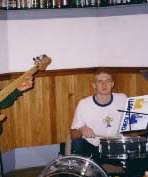
See also
References
- 1 2 3 "Bulletin: Male Sophomore Falls to Death". The Tech. Massachusetts Institute of Technology. March 14, 1998. Retrieved May 12, 2010.
- ↑ ""RealWorld Corp., Concord, Sold" Thursday July 7, 1988 - Concord by Tom Fahey published in Union Leader Manchester, NH" (PDF).
- 1 2 3 4 5 6 7 8 9 10 11 12 13 Ebner, Mark (April 29, 1999). "Death of a Nethead". New Times Los Angeles. Gawker. Retrieved May 12, 2010.
- ↑ Krueger, Curtis (November 10, 1991). "Members laud schooling, church's no-drug stance; Series: Scientology's children". St. Petersburg Times. p. 13-A.
- 1 2 3 4 5 6 7 8 9 10 Mallia, Joseph (May 21, 1998). "Why did this brilliant MIT student jump to his death?". Boston Herald. Herald Media Inc. Archived from the original on October 6, 1999. Retrieved May 12, 2010.
- 1 2 3 4 5 6 7 8 "Student dies in fall from Bldg 54". MIT news. Massachusetts Institute of Technology. March 18, 1998. Retrieved May 12, 2010.
- 1 2 Hussain, Zareena (March 17, 1998). "Gale Falls to Death from Green Building Classroom". The Tech. Massachusetts Institute of Technology. 118 (13). Retrieved May 12, 2010.
- 1 2 3 Chung, Jennifer (April 3, 1998). "Gale's Death Prompts Questions on Scientology". The Tech. Massachusetts Institute of Technology. 118 (16): 1. Retrieved May 12, 2010.
- ↑ Herper, Matthew J. (November 1, 1999). "Binge and Purge: Scolding students won't make them safer". Reason. Reason Foundation. Retrieved May 12, 2010.
- 1 2 Landrigan, India F. (March 16, 1998). "MIT Student Dead After Apparent Suicide". Harvard Crimson. Harvard University. Retrieved May 12, 2010.
- 1 2 3 4 5 6 Siegel, Robert; Tovia Smith (August 29, 2001). "Massachusetts Institute of Technology looks for ways to deal with the incidence of student suicides in recent years". All Things Considered. National Public Radio.
- ↑ Canellos, Peter S. (March 24, 1998). "Campus Suicides Leave Many Students Reelings MIT, Harvard, UMASS Coping with Tragedies". The Boston Globe. The New York Times Company.
- ↑ "Scientology Unmasked - Powerful church targets fortunes, souls of recruits". www.apologeticsindex.org. Retrieved 2016-03-02.
- ↑ "Scientology Unmasked - "Church keys programs to recruit blacks" Boston Herald by Joseph Mallia". 2003-02-12. Archived from the original on February 12, 2003. Retrieved 2016-03-02.
- ↑ "Scientology Unmasked Part 1 - "Judge found Hubbard lied about achievements" Boston Herald by Joseph Mallia". 2003-02-12. Archived from the original on February 12, 2003. Retrieved 2016-03-02.
- ↑ "Scientology Unmasked "Scientology reaches into schools through Narconon" Boston Herald by Joseph Mallia". 2003-02-12. Archived from the original on February 12, 2003. Retrieved 2016-03-02.
- ↑ "Scientology Unmasked - "Church, enemies wage war on Internet battlefield; Copyright laws used to silence online foes" Boston Herald by Joseph Mallia". 2003-02-12. Archived from the original on February 12, 2003. Retrieved 2016-03-02.
- ↑ "Scientology Unmasked - "Scientology group reaches kids through PBS videos" Boston Herald by Joseph Mallia". 2003-02-12. Archived from the original on February 12, 2003. Retrieved 2016-03-02.
- ↑ "Who is Philip Gale?". 2002-02-03. Archived from the original on February 3, 2002. Retrieved 2016-03-02.
- ↑ "Who is Philip Gale?". 2001-12-06. Archived from the original on December 6, 2001. Retrieved 2016-03-02.
- ↑ Coloma, Sonny (November 28, 2003). "Vector: Descent into despair". BusinessWorld. BusinessWorld Publishing Corporation. p. 5.
